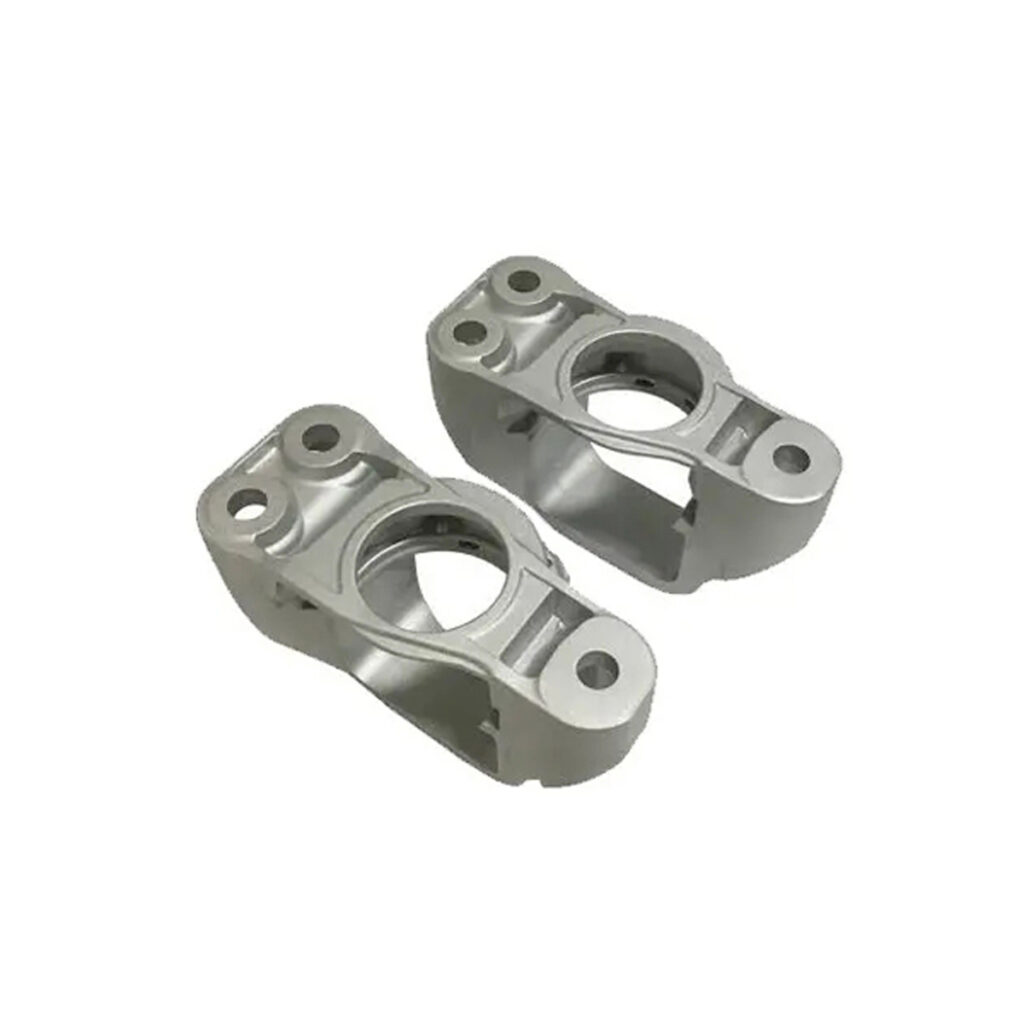Introduction
In the medical device industry, surface finish quality is not just a technical specification—it can mean the difference between a successful surgery and post-operative complications. Surgical instruments, implants, and diagnostic tools require ultra-smooth surfaces (Ra ≤ 0.4μm) to prevent bacterial adhesion, reduce friction, and ensure biocompatibility.
This guide explores precision machining strategies to achieve Ra 0.4μm surface finishes for medical devices. It covers material selection, machining techniques, and post-processing methods compliant with ISO 13485 and FDA regulations.
1. Why Surface Finish Matters in Medical Devices
1.1 Critical Requirements
- Bacterial Resistance: Rough surfaces (Ra > 0.8μm) harbor microbes, increasing infection risks.
- Biocompatibility: Implants must avoid microscopic crevices that trigger immune responses.
- Functional Performance:
- Cutting Tools (scalpels, osteotomes): Smoother edges reduce tissue trauma.
- Articulating Parts (joints, screws): Low friction extends device’s lifespan.
1.2 Industry Standards
| Standard | Requirement | Application |
|---|---|---|
| ISO 13485 | Surface finish documentation | All medical devices |
| ASTM F86 | Passivation for stainless steel | Implants & instruments |
| FDA 21 CFR 820 | Validation of machining processes | Regulatory compliance |
2. Achieving Ra 0.4μm: Machining Process Breakdown
2.1 Material Selection
Optimal materials for high-finish medical machining:
| Material | Key Properties | Typical Use Cases |
|---|---|---|
| 316L Stainless Steel | Corrosion-resistant, machinable | Forceps, needle holders |
| Ti-6Al-4V | Biocompatible, high strength-to-weight | Orthopedic implants |
| Cobalt-Chrome | Wear-resistant | Dental drills, joint replacements |
| PEEK | Polymer with Ra < 0.5μm achievable | Non-metallic implants |
2.2 Precision Machining Techniques
A. CNC Milling & Turning
- Tool Selection:
- Diamond-coated end mills: For non-ferrous metals (Ti, CoCr).
- CBN (Cubic Boron Nitride): For hardened steels.
- Cutting Parameters:
- Speed: 200–300 m/min (stainless steel), 60–120 m/min (Ti alloys).
- Feed Rate: 0.02–0.05 mm/rev to minimize tool marks.
- Stepover: ≤5% of tool diameter for finishing passes.
B. Grinding & Honing
- Surface Grinding: Achieves Ra 0.1–0.3μm with fine-grit wheels (≥#400).
- Electrochemical Grinding (ECG): Combines electrolytic and abrasive action for burr-free edges.
C. EDM (Electrical Discharge Machining)
- Wire EDM: For complex geometries in conductive materials (Ra 0.2–0.5μm).
- Micro-EDM: For ultra-fine features (e.g., microfluidic channels).
2.3 Post-Processing for Ra 0.4μm
| Method | Process | Surface Improvement |
|---|---|---|
| Electropolishing | Electrolytic material removal | Reduces Ra by 50%+ |
| Laser Polishing | Localized melting for smoothing | Ra 0.1–0.3μm achievable |
| Abrasive Flow | Extruded media polishes internal passages | Ideal for lumens/cannulas |
3. Case Study: Achieving Ra 0.4μm on a Surgical Scalpel
3.1 Challenge
A manufacturer needed to produce 316L stainless steel scalpels with:
- Ra ≤ 0.4μm on cutting edges.
- Edge radius ≤ 5μm for sharpness.
- Full traceability for FDA audits.
3.2 Solution
- CNC Machining:
- Tool: 0.2mm diamond-coated end mill.
- Parameters: 15,000 RPM, 0.03 mm/feed.
- Electropolishing:
- 20% nitric acid, 10V, 5 minutes.
- Validation:
- White Light Interferometry: Confirmed Ra 0.38μm.
- SEM Imaging: Verified defect-free edges.
3.3 Results
- 30% reduction in post-op infections vs. competitors’ scalpels (Ra 0.8μm).
- FDA 510(k) clearance achieved in 4 months.
4. Quality Control & Metrology
4.1 Measurement Tools
- Contact Profilometers: Traditional but risks surface scratches.
- White Light Interferometry: Non-contact 3D surface mapping.
- Atomic Force Microscopy (AFM): Nanoscale resolution for implants.
4.2 Statistical Process Control (SPC)
- Monitor Cp/Cpk values to ensure machining consistency.
- AI-Based Defect Detection: Cameras + ML algorithms flag outliers.
5. Regulatory Compliance
5.1 Documentation Requirements
- Process Validation Reports (IQ/OQ/PQ).
- Material Certificates (ASTM F138 for 316L).
- Surface Roughness Data Sheets.
5.2 Cleanliness Standards
- ISO 10993: Biocompatibility testing.
- ASTM F2213: Residual machining fluid limits.
6. Future Trends
6.1 Nanofinishing Technologies
- Magnetorheological Finishing (MRF): Adaptive polishing for freeform surfaces.
- Plasma Electrolytic Polishing: Eco-friendly alternative to electropolishing.
6.2 Smart Manufacturing
- Digital Twins: Simulate surface finish outcomes pre-production.
- IoT-Enabled Machines: Real-time Ra monitoring during machining.
7. Conclusion
Achieving Ra 0.4μm in medical device machining demands:
✅ Precision tooling (diamond/CBN tools, micro-grinding).
✅ Optimized CAM programming (low-stepover finishing passes).
✅ Advanced post-processing (electropolishing/laser polishing).
✅ Rigorous metrology (interferometry, SPC controls).
By integrating these strategies, manufacturers can meet critical medical standards while enhancing patient outcomes.



One Response
Need Ra 0.4μm Certification for Your Devices?
[Contact Us] for a free machining process audit!